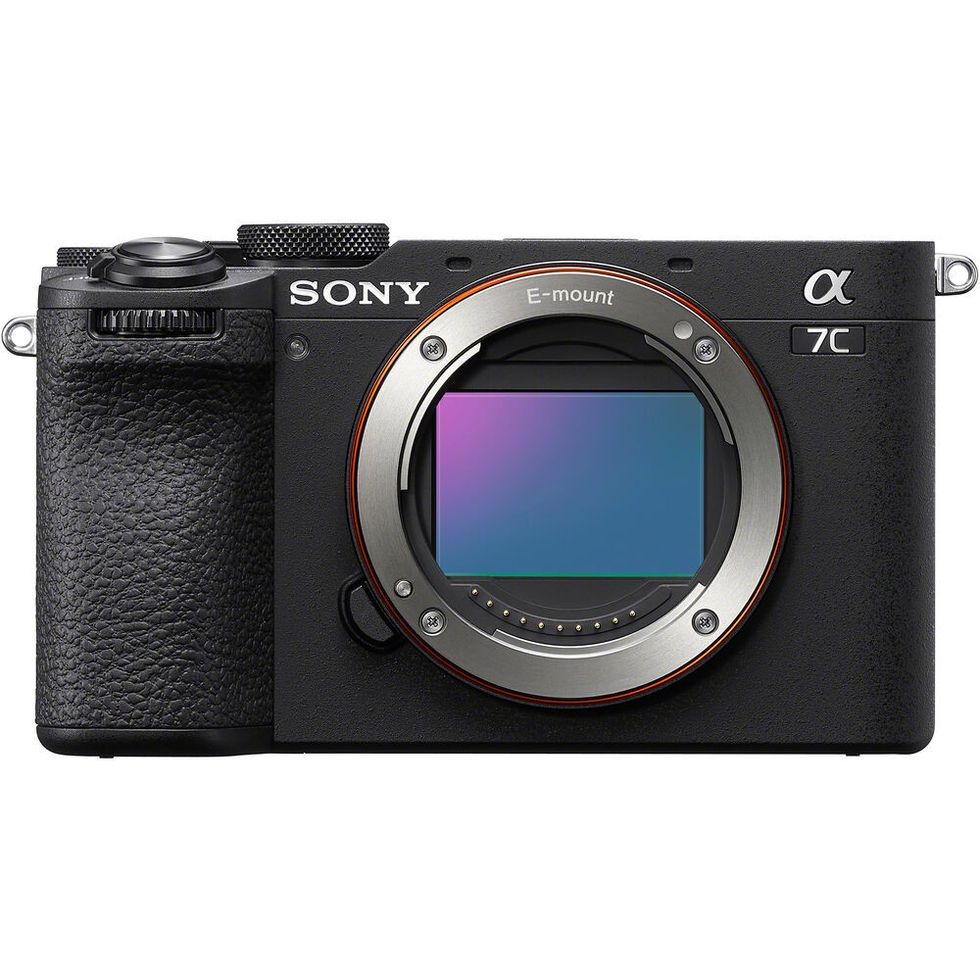
Within mere minutes of an exciting new camera being announced—like the Sony a7C II—we already have tons of cool reviews, tutorials, and built-out hacks to explore on YouTube and across different filmmaking communities.
While we are certainly excited about the Sony a7C II ourselves (as well as its beefier sibling the Sony a7CR), we’re even more excited to check out some of the cool build-out hacks that are already popping up online that should turn this a7C update into a more functional higher-end cinema camera option, which surprisingly rivals the bigger, more expensive cinema cameras more than you might think.
Let’s look at this build from DSLR Video Shooter and explore how you might want to upgrade the Sony a7C II if you do indeed decide to purchase it here soon.
Building Out the Sony a7C II

So, before we dive into this cinema conversion build-out, let’s rehash some of the pros and cons of the Sony a7C II itself and what you might want to add (or subtract) from its out-of-the-box specs.
As a camera we knew was coming, it was no surprise really to see Sony double down on the popular Sony a7C with an update. However, while the A7C II might have bumped up the recording capabilities a bit, overall truthfully not a huge improvement in terms of video recording specs as it maxes out at 10-bit Full-Frame 4K30p video internally.
The Sony a7C II’s best features really have to do with its new AI processor that powers all types of improved auto features like focus, exposure, and even white balance. It’s certainly a smarter camera than its predecessor, but still perhaps lacking in terms of the raw video recording capabilities you might want in a cinema camera.
A Cinema Camera Conversion

That’s where this cinema camera conversion from DSLR Video Shooter comes in as a welcomed build-out option for those looking for higher-end specs and features. The focus of this build is all about adding functionality and modularity to the camera.
As a compact frame mirrorless, you’re obviously not going to have all of the mounting options and cooling controls that you’d find on a bigger cinema camera.
There’s a lot to go over in this build, so if you’d like to follow along here are the timestamps for the different sections below.
- 0:00 Introduction
- 0:55 P-A7C II Cinema Camera
- 2:18 Sony A7C II Overview
- 4:22 Parts Needed
- 5:40 Building the Cinema Camera
- 9:59 Additional Accessories
- 10:56 But Why?
- 13:06 Sony A7C II Final Thoughts
Overall though, this build-out should only really cost you around $300 more than the Sony a7C II’s $2,200 price tag.
What Should You Consider Adding to the Sony a7C II
All that being said, any build-out that you could or should consider really will come down to you and your videography and cinematography needs. Adding a modular base rig to a mirrorless camera is nothing new, but if you’re serious about adding features and more high-end functionality, it’s a great place to start.
Honestly, there are so many great digital mirrorless camera options out there on the market today that could easily rival some of the best specs from their cinema camera counterparts. However, there’s a reason why most professional DPs prefer cinema cameras over mirrorless ones and it isn’t just based on specs.
With a real cinema camera, you’re getting much better design and durability. If you are focused on building out a cinema conversion rig, your focus should be on making sure things are secure and cool enough to work on larger, and often longer, projects and shoots.
Sony a7C II Mirrorless Camera

Building off the sleek profile and full-frame sensor combination of its first-generation predecessor, the black Sony a7C II offers improved resolution, autofocus, in-body image stabilization, and video capabilities in the same compact, all-day, everyday form factor.
Author: Jourdan Aldredge
This article comes from No Film School and can be read on the original site.
